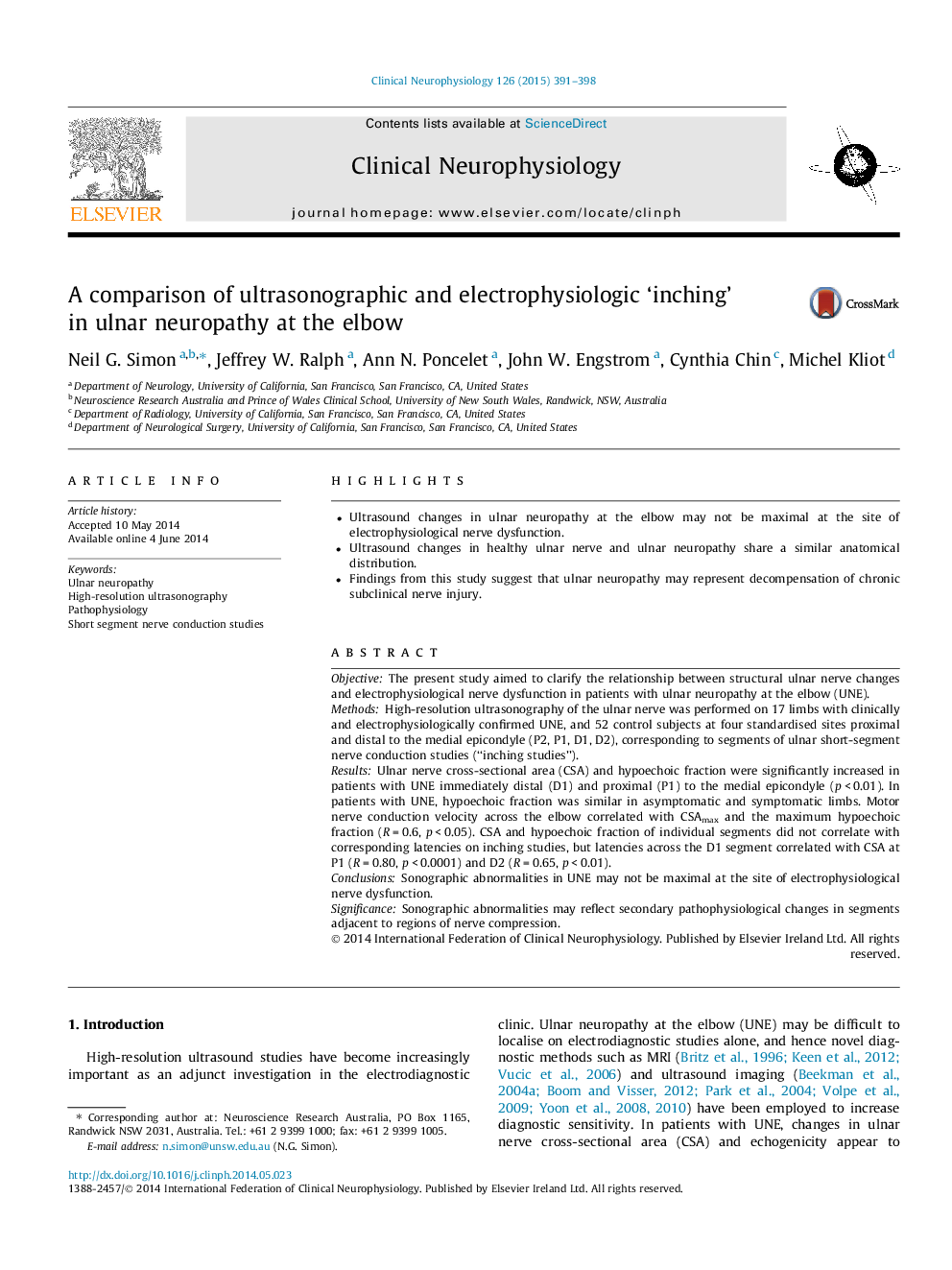| Article ID | Journal | Published Year | Pages | File Type |
|---|---|---|---|---|
| 3043083 | Clinical Neurophysiology | 2015 | 8 Pages |
•Ultrasound changes in ulnar neuropathy at the elbow may not be maximal at the site of electrophysiological nerve dysfunction.•Ultrasound changes in healthy ulnar nerve and ulnar neuropathy share a similar anatomical distribution.•Findings from this study suggest that ulnar neuropathy may represent decompensation of chronic subclinical nerve injury.
ObjectiveThe present study aimed to clarify the relationship between structural ulnar nerve changes and electrophysiological nerve dysfunction in patients with ulnar neuropathy at the elbow (UNE).MethodsHigh-resolution ultrasonography of the ulnar nerve was performed on 17 limbs with clinically and electrophysiologically confirmed UNE, and 52 control subjects at four standardised sites proximal and distal to the medial epicondyle (P2, P1, D1, D2), corresponding to segments of ulnar short-segment nerve conduction studies (“inching studies”).ResultsUlnar nerve cross-sectional area (CSA) and hypoechoic fraction were significantly increased in patients with UNE immediately distal (D1) and proximal (P1) to the medial epicondyle (p < 0.01). In patients with UNE, hypoechoic fraction was similar in asymptomatic and symptomatic limbs. Motor nerve conduction velocity across the elbow correlated with CSAmax and the maximum hypoechoic fraction (R = 0.6, p < 0.05). CSA and hypoechoic fraction of individual segments did not correlate with corresponding latencies on inching studies, but latencies across the D1 segment correlated with CSA at P1 (R = 0.80, p < 0.0001) and D2 (R = 0.65, p < 0.01).ConclusionsSonographic abnormalities in UNE may not be maximal at the site of electrophysiological nerve dysfunction.SignificanceSonographic abnormalities may reflect secondary pathophysiological changes in segments adjacent to regions of nerve compression.
